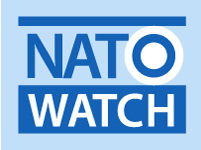– nuclear exercises by Russia and NATO to go ahead
Analysis of the NATO Defence Ministers meeting, 12-13 October 2022
The two-day NATO Defence Ministerial meeting in Brussels was the first since the NATO Madrid Summit in June 2022 and the first Ministerial that Finland and Sweden joined as Invitees. Three main issues were discussed: Support to Ukraine – this included a meeting of the Ukraine Defence Contact Group; Progress on strengthening NATO’s defence and deterrence, against the backdrop of a significant escalation in the Russia-Ukraine war - this included (a) a meeting of the Nuclear Planning Group; (b) discussions on increasing the protection of critical infrastructure; and (c) discussions on increasing military production and strengthening the military base within Member States; and NATO’s missions and operations, including those in Kosovo and Iraq.
Key activities and decisions taken by the NATO Defence Ministers:
- France, Germany, the Netherlands, Spain the UK and the USA, announced delivery of new air defences to Ukraine, while other NATO Member States committed more military aid. NATO agreed to provide Ukraine with hundreds of “drone jammers” for use against Russian and Iranian drones.
- Addressing Russia’s recent nuclear threats, the NATO Secretary General said any use of nuclear weapons by Russia would have “severe consequences”, adding that the circumstances in which NATO might use nuclear weapons are "extremely remote".
- NATO agreed to hold its annual, “routine” nuclear preparedness exercise, ‘Steadfast Noon’, while Russia will also hold its own annual nuclear exercises.
- It was agreed to increase stockpiles of munitions within Member States and to speed up the delivery of capabilities after months of allied arms shipments to Ukraine.
- It was agreed to further enhance the resilience of critical undersea and energy infrastructure (following the recent sabotage on the Nord Stream pipelines). To this end, NATO has doubled its presence in the Baltic and North Seas to 30 ships, supported by maritime patrol aircraft and undersea capabilities.
- Fourteen NATO Member States (Belgium, Bulgaria, Czechia, Estonia, Germany, Hungary, Latvia, Lithuania, the Netherlands, Norway, Slovakia, Slovenia, Romania and the UK) and Finland agreed to launch a German-led ‘European Sky Shield Initiative’, which aims to create a common European air and missile defence system.
- A Review Board was established to govern the responsible development and use of Artificial Intelligence and data across NATO. A summary of the decision, and a summary of NATO’s Autonomy Implementation Plan were published.
- The Ministers also approved NATO’s first ‘Digital Transformation vision’.
Read more in the attached pdf briefing paper
Editorial comment: Blind man’s bluff – with nuclear weapons
In September, President Putin delivered barely veiled nuclear threats against NATO, saying: “I want to remind you that our country also has various means of destruction….. and when the territorial integrity of our country is threatened, to protect Russia and our people, we will certainly use all the means at our disposal”. Putin added: “It’s not a bluff”. A senior US administration official responded by saying “This is another episode in what has been a series of episodes over the course of this war where Putin is trying to rattle his sabre trying to scare us off. He has not succeeded before – he won’t succeed now, but that doesn’t mean that we’re blind to the dynamics that could relate to escalation”.
But the reality is that Russia, the United States and NATO are blind to the dynamics that could lead to nuclear war, or at least appear willing to take fearsome risks with possible cascade effects or miscalculations that could end in nuclear war. The premise of nuclear deterrence theory rests on certainties about nuclear signalling. But currently there is so much room for error or misunderstanding on both sides, as well as questions over the rationality of some of the decision-makers, that there must be doubt over whether deterrence will hold. The theory also provides a false sense of confidence—note the NATO Secretary General’s claim that NATO's nuclear deterrent has been effective “for decades”—and is leading to risk-taking that would be avoided without nuclear threats in place. President Macron’s assurance that French nuclear weapons would not be used in response (to a Russian nuclear attack on Ukraine) is an effort to turn down the heat. The criticism he has received from some quarters illustrates the fixation attached to nuclear ambiguity that is both irresponsible and inaccurate (nuclear weapon states all issue negative security assurances). Moreover, when nuclear deterrence theory fails—as it surely must at some point—such failure could result in unimaginable humanitarian and environmental consequences.
For all these reasons NATO should be looking to deescalate the situation and should have postponed its annual nuclear training exercise, Steadfast Noon, which starts on 17 October. Russia should also cancel its nuclear exercises and end its threats to use nuclear weapons. Both Russia and NATO should join the majority of the international community that is seeking to stigmatise nuclear threats and take real actions for nuclear disarmament. The Treaty on the Prohibition of Nuclear Weapons outlaws the use and threat of use of nuclear weapons and provides a framework for the nuclear-armed states to eliminate their nuclear weapon programmes in a verifiable timeframe. And the best tools for achieving peace in Ukraine remain dialogue, diplomacy and negotiation.
| Attachment | Size |
|---|---|
| nato_watch_briefing_98_defence_ministers.pdf | 326.92 KB |
